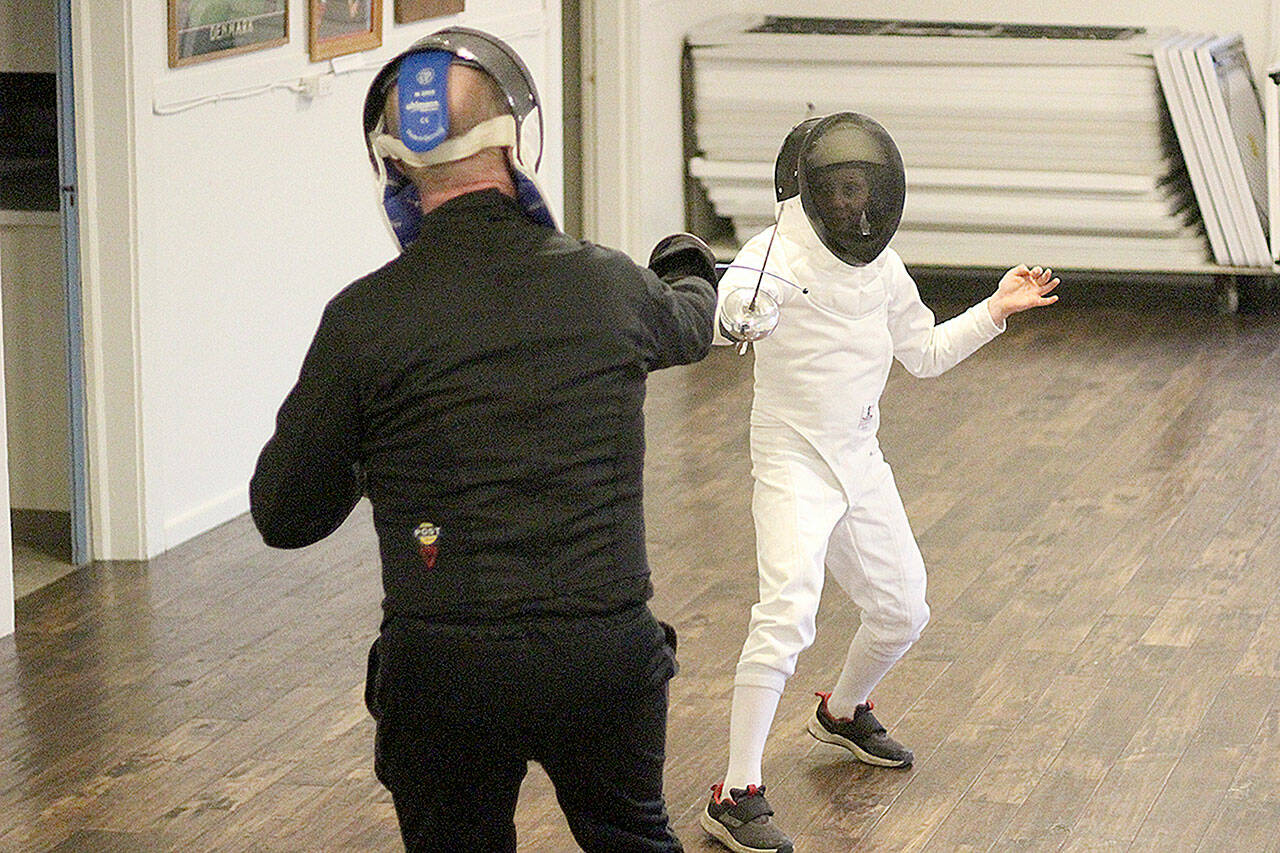Attack, riposte, parry and — as quick as you can blink — a touch, a point, and the match begins again, swords whirling.
Sword dueling has been around since ancient history, but the art of fencing, sometimes called a western martial art, came around in the 1400s.
Since then, the sport has evolved into the Summer Olympic event we’re entertained by today, and now you can learn to enjoy the sport yourself with classes beginning on the Plateau.
Kurt Dunning, prior student of fencing master Mel North, USA Fencing champion with Nevada State University in 2000, and certified United States fencing coach, has begun hosting lessons at the Enumclaw Danish Hall on Thursdays from 6 to 8:30 p.m.
“We’re just in our start-up phase,” he said in a recent interview; the student that shows up to most classes is his son. “Great time to get onboard.”
For those unfamiliar with the sport, there are three major weapon styles.
One is saber, the most recently-developed weapon style. It uses a light sword, and athletes target everything above the waist, including the face (thankfully protected by a helmet) with either the point or the blade.
Épée, Dunning’s favorite style, uses a heavier sword to target everywhere and anywhere on the body, but only with the point.
Finally, there’s the foil, which also uses a light sword to target the “vest” area (shoulders, waist, and groin, but not the arms or legs). Only the point can be used to score.
All styles are fast-paced, and according to Dunning, require quick thought to be able to respond to attacks, parries, and ripostes.
“It’s an intellectual sport,” he said. “My teacher called it physical chess.”
While Dunning says he can teach all three, he believes the foil weapon style is the easiest for beginners to pick up.
Beginning lessons, he continued, involve getting familiar with all the gear being used, warmups, and basic footwork.
“The last thing you want to do is just rush right in and go willy-nilly and end up being injured,” Dunning added.
Once a foundation has been laid for footwork, students would split off into pairs for drills.
“You’re not ‘going for it’ — it’s very predictable structure,” Dunning said. “We’re going to parry this way, you’re going to make this threat, he’s going to parry this way, you’re going to respond.”
It’s only later in the lessons — Dunning said three or four, depending on the progress being made — that students begin to have live matches to practice what they’ve learned in real time.
Dunning has a good collection of gear, from the protective vest to the swords, that students can use during classes.
However, masks are not shared, and students will have to provide their own; basic masks can cost upward of $70.
The asking price for classes is $100, but Dunning said he’ll operate on a sliding scale, based on how many classes per month people want to attend.
For more information about Dunning and Plateau Fencing, head to tozai-aikido.com/plateau-fencing.html, facebook.com/PlateauFencingofEnumclaw, or give him a call at 509-901-4514.


